Unmasking Robin Hood / Green Arrow
The young sidekick tears off Green Arrow’s mask, but instead of Oliver Queen, we see Van Heller, the writer who encouraged Green Arrow to duplicate those famous archery stunts. But the cops also recognize the man as Archie the Archer, who they’ve been after for a long time.
Just then, the real Green Arrow arrives on the scene. He’s just escaped from Van Heller’s men. The crooks had released a smoke bomb during the gunpowder trick shot and kidnapped Green Arrow. (Well, they don’t use the word kidnap and nor do they depict this in the art. This may be due to page restrictions of the six page story, or it may be due to the provisions in the Comics Code that limit the depiction of kidnapping.)
Speedy reveals he knew the Robin Hood-like Green Arrow was a fake, because when he emerged from the smoke, Green Arrow was wearing a green feather in his cap. At this time, Green Arrow always wore a red feather. (He’d switch to green feathers in 1969.)
As the story concludes, Green Arrow also adds that Van Heller only gave away part of his loot to make the Robin Hood act seem real. The space limitations of the story prevent a true exploration of the criminal’s motivation for this absurdly complicated scheme.
If this story seems familiar to you, it might be because of its similarities to the 1948 story “The Archer from Sherwood Forest” story that I covered in a previous section. In the earlier story, an actor starring in a Robin Hood movie conked his head and started committing Robin Hood-related robberies. At the end of the story it turned out the culprit wasn’t the actor at all but a disgruntled cameraman who was trying to frame him. This time it’s Green Arrow himself who is being framed.
The idea of duplicating famous feats of archery also has precedents in the 1951 “The Archers from Yesteryear” and the 1955’s “The World’s Most Famous Arrows”, both covered previously.
Disguise is a common trope in both superhero stories and in the Robin Hood legend. And as with some of the earlier takes, robbing the rich and giving to the poor is considered a crime that needs to be stopped. So, what does that mean for when Green Arrow once again encounters the "real" Robin Hood?
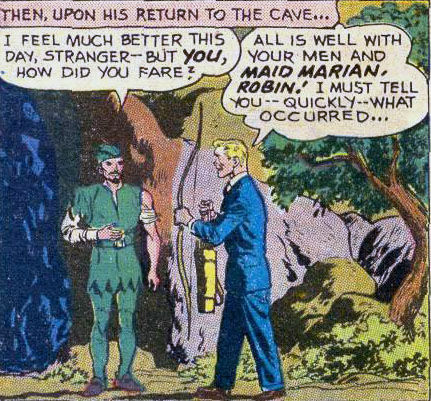
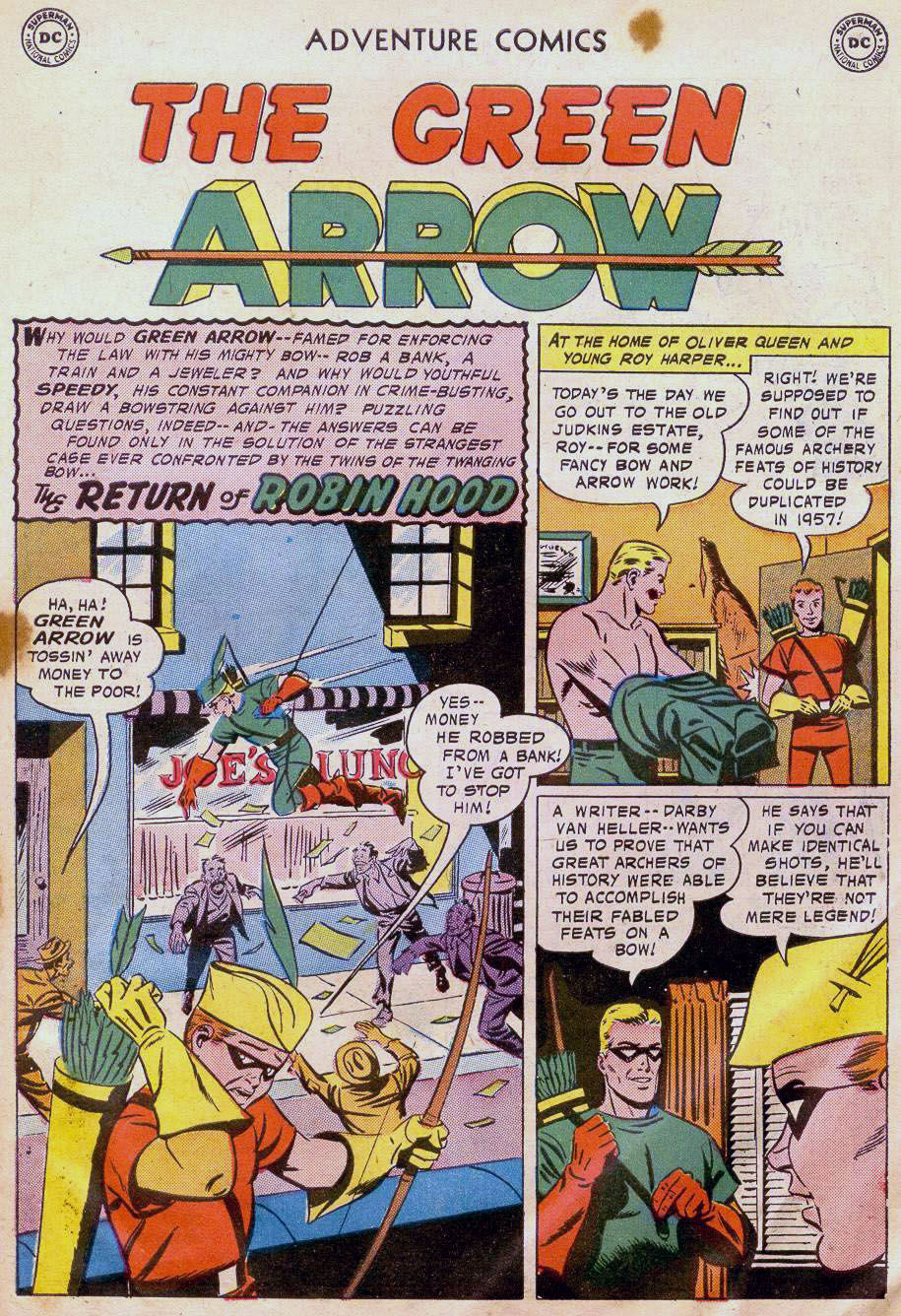
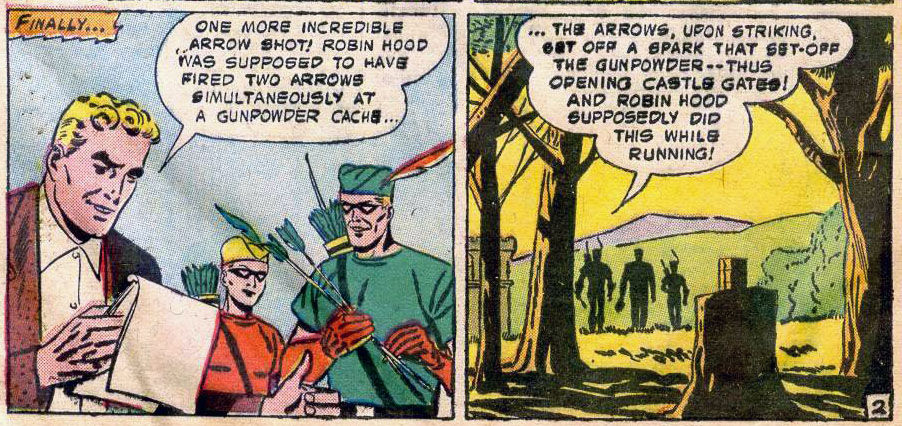
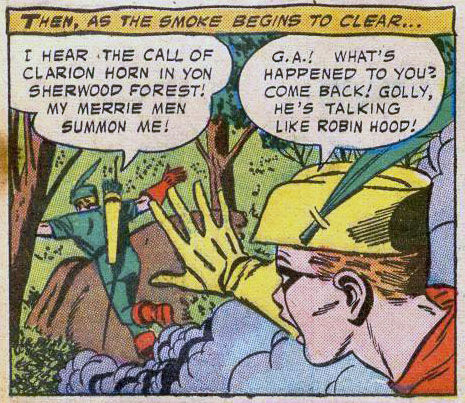
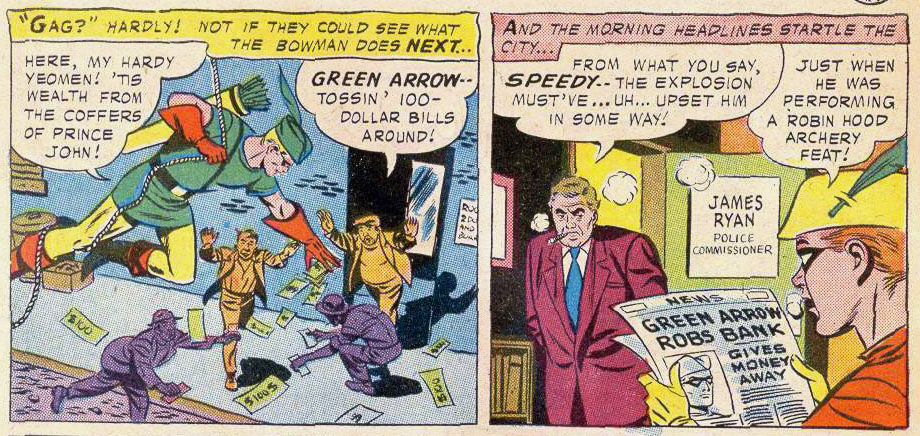
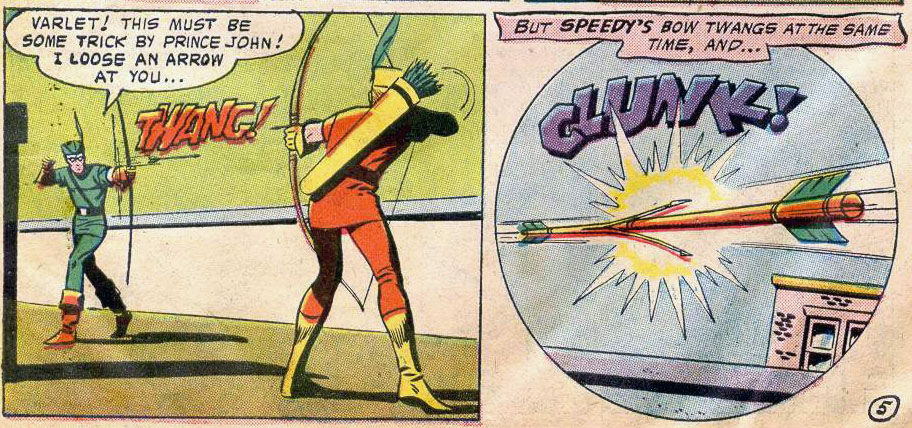
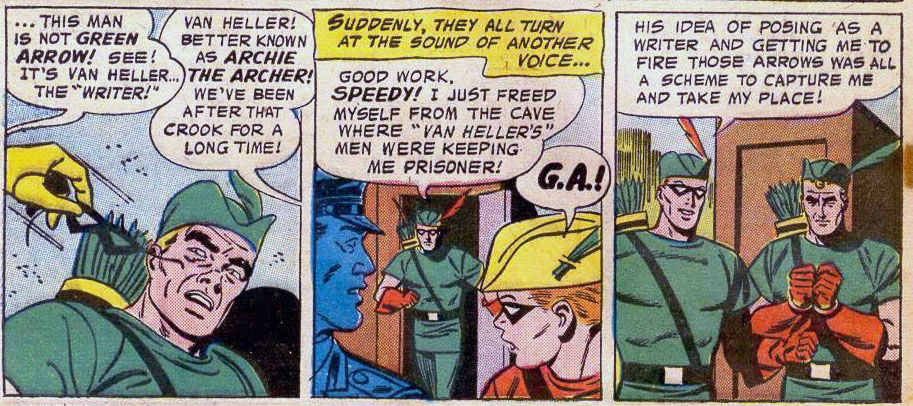
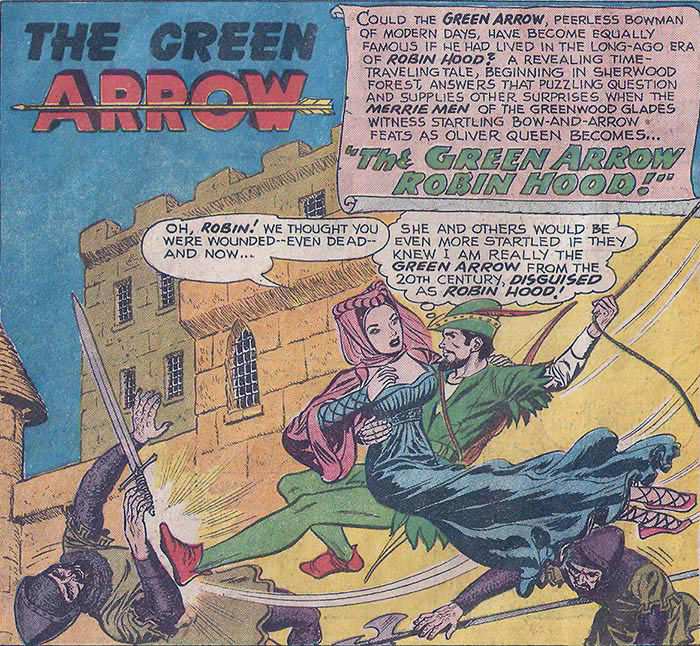
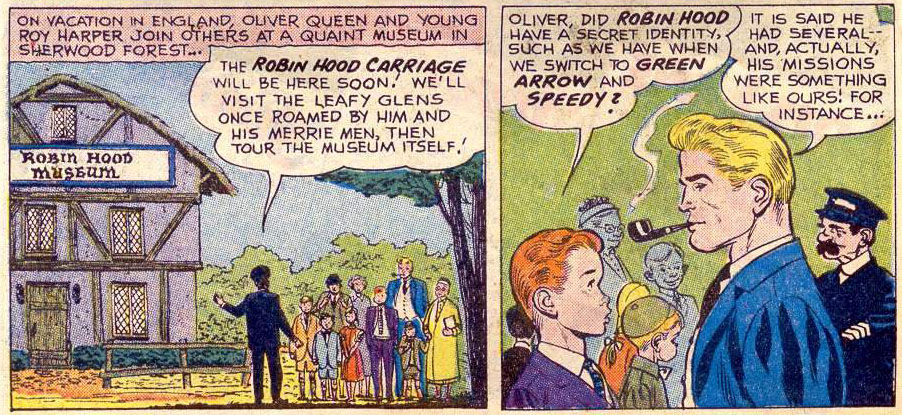
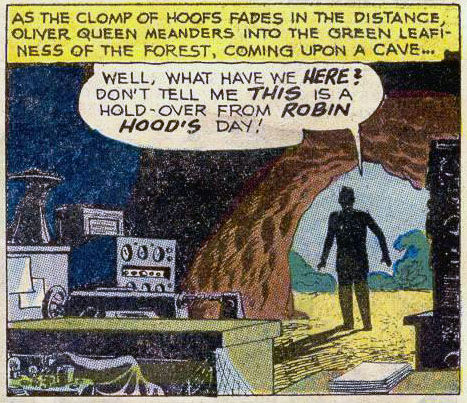
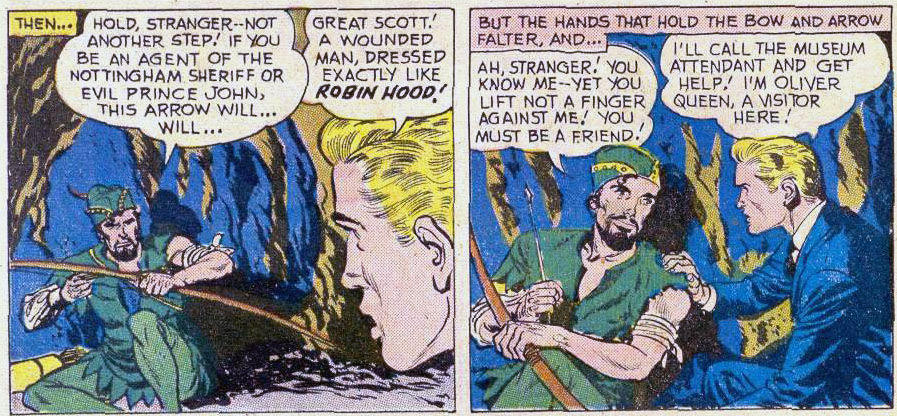
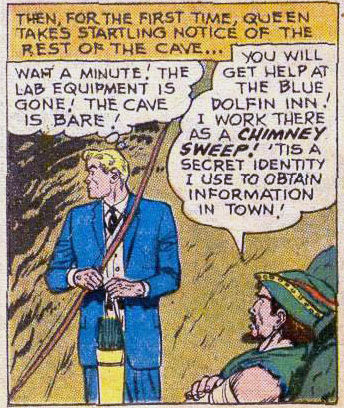
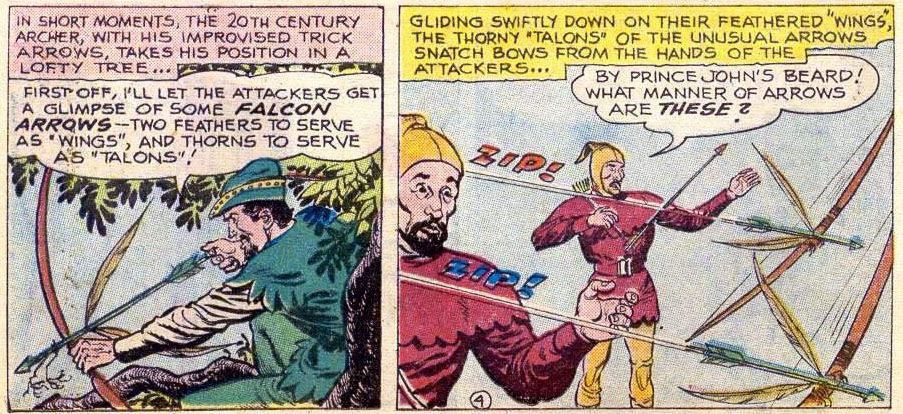
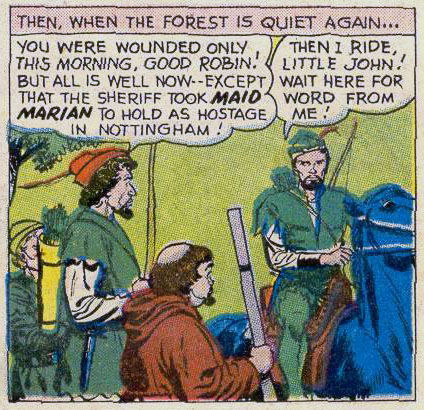
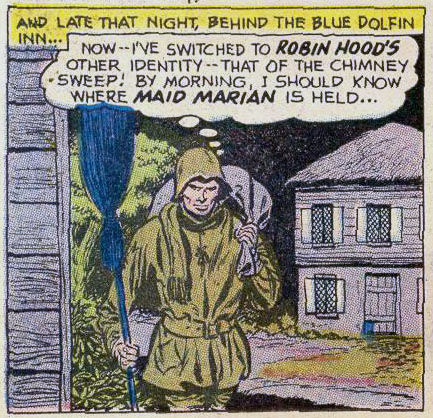
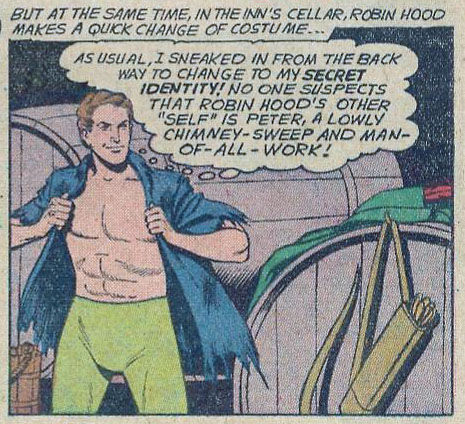
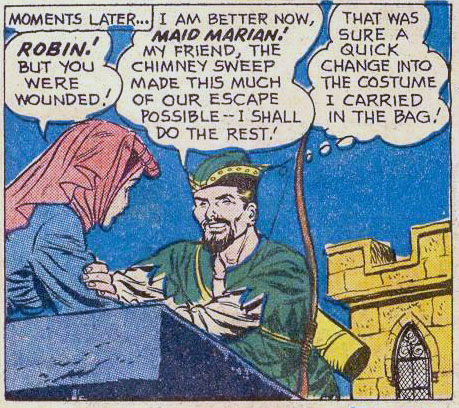
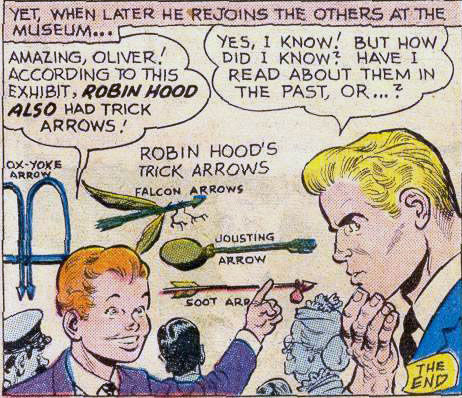
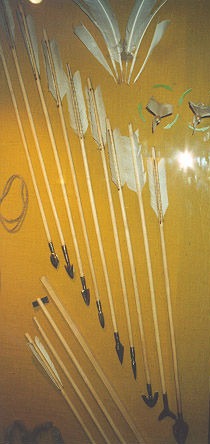
Contact Us